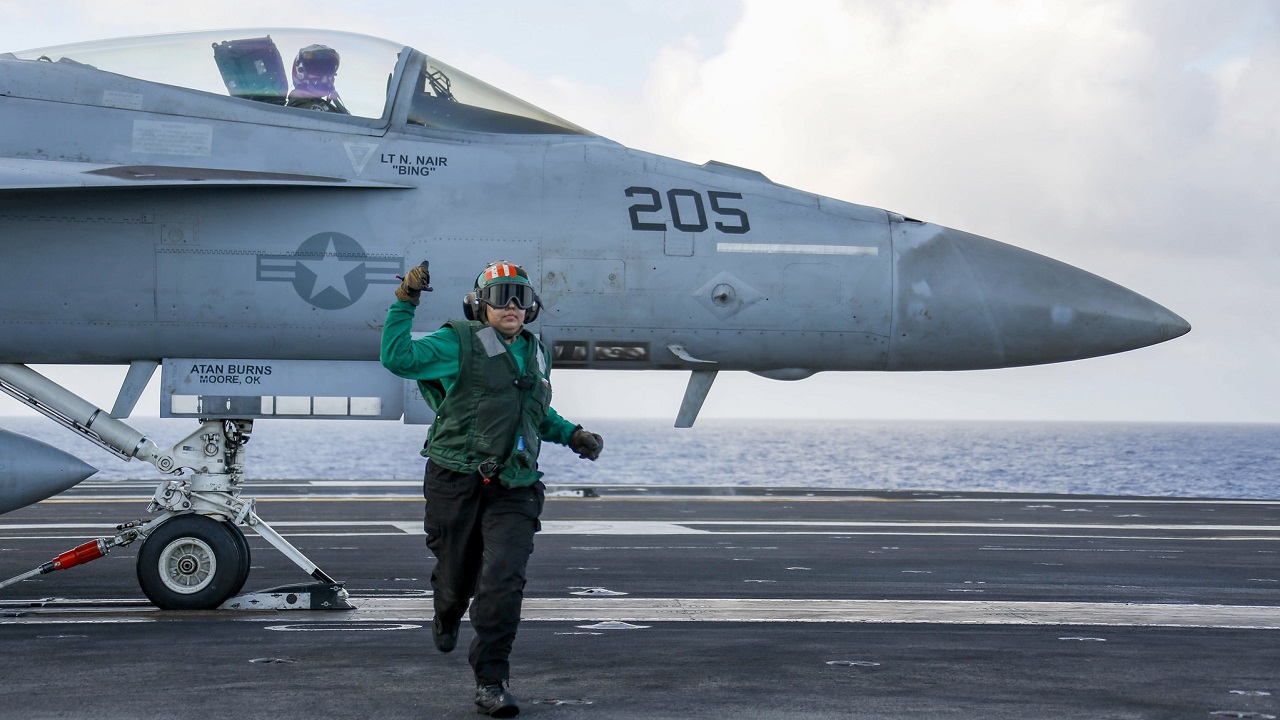How Would the U.S. Navy respond and defend against hypersonic missiles that could beat their missile defense in a potential war?
(Subscribe to Our YouTube Channel Here. 19FortyFive publishes original videos every day.)
It is a question that continues to make the rounds on Quora and Reddit as armchair experts debate the vulnerabilities of the United States Navy’s nuclear-powered Nimitz-class and Gerald R. Ford-class supercarriers – namely, “Could China really sink a U.S. Navy aircraft carrier?”
The answer is obvious: Yes, without question.
All modern warships are made of steel, a material that doesn’t float. A number of well-placed shots with armor-piercing .50 caliber rounds below the waterline could in theory even result in the eventual sinking of a modern carrier if countermeasures were not taken. But it wouldn’t be as easy as simply punching a hole in the vessel. Modern ships are designed to be difficult to sink, but it’s not impossible.
Could China Pull It Off? Don’t Use the Term Unsinkable
Simply put, it has been 110 years since anyone has made a dubious claim that any vessel is unsinkable.
“There is no danger that Titanic will sink,” reportedly proclaimed Phillip Franklin, vice president of the White Star Line – the owner of RMS Titanic – upon hearing of the ship’s striking an iceberg on April 15, 1912.
“The boat is unsinkable and nothing but inconvenience will be suffered by the passengers,” Franklin told reporters outside of New York’s press offices who were waiting for word on the vessel. Only later did he admit his mistake, stating, “I thought her unsinkable, and I based my opinion on the best expert advice. I do not understand it.”
Improvements have been made in more than a century since that night to remember, and global shipping losses have decreased significantly. Yet, as the 2012 Costa Concordia disaster reminded us, no ship is truly unsinkable. Hitting a rock – much like hitting an iceberg nearly a century earlier – won’t result in a good outcome.
Harder to Sink – But Not Impossible for China
As warships have gotten larger, it has become increasingly harder to sink them by gunfire alone.
Yet, the forward-thinking United States Army Gen. Billy Mitchell was able to prove in the 1920s that small aircraft could sink a battleship – a fact that didn’t go over all that well with many in the United States Navy.
It was discovered in the Second World War that one or two torpedoes could and did sink carriers and battleships – while it was further determined that torpedoes were far more effective than bombs. The issue today would be whether a submarine could actually get close enough to launch a torpedo. A carrier doesn’t operate alone and is escorted by a strike group that includes submarines, a cruiser, and multiple destroyers and/or frigates. In addition, the carrier’s airwing will regularly conduct anti-ship warfare (ASW) sorties.
Yet, back in 2005, the then-newly constructed USS Ronald Reagan (CVN-76) was theoretically “sunk” during war games that pitted a carrier task force against the small Swedish diesel-powered submarine HSMS Gotland.
The submarine was so silent it was able to run rings around the carrier strike group, so there remains a fear that an adversary could lay in wait and take a shot of opportunity against a flattop.
That same year that the Navy was shocked to discover that a small submarine could sink its newest carrier, an effort was made to actually sink the Kitty Hawk-class aircraft carrier USS America (CV-66) via a “SinkEx” operation. Yet, it wasn’t as easy as dropping a bomb like it was done back in Mitchell’s day. In fact, it took four weeks with live fire ordnance to send the mighty vessel to the bottom.
Far larger than World War II-era battleships, CV-66 lacked the heavy armor, but instead was built with a double-layered hull that featured alternating layers of steel and empty pockets. In addition, she was designed with internal compartmentalization that was far better than that of the old battle wagons.
Back to the Question
To the original point, yes, China could sink a carrier – and it would be imprudent to think otherwise.
The People’s Liberation Army has touted its so-called “carrier killer missiles,” which are powerful enough and reportedly accurate enough to sink even the largest warships that the U.S. Navy has to offer.
Of course, it could be noted that the large size of the carriers actually works in any missile’s favor. Large warships are simply easier to target. China has ramped up its efforts to improve its accuracy by building targets in the shape of U.S. Navy carriers in its remote desert.
As NavalNews.com reported, Anti-ship Ballistic Missiles (ASBMs) pose an unpredictable threat to carriers and other high-value targets. While modern heavyweight torpedoes can break the back of a modern carrier, the submarine would still need to be in the right place at the right time, whereas most anti-ship missiles have either lacked the range or size to strike a catastrophic blow to large ships like a carrier. This is where the new carrier killer missiles could change the playing field, and question the future of the floating airbases.
The carrier killers include China’s DF-26B anti-ship ballistic missiles, and it was just two years ago, in late summer 2020, that China conducted test launches of the platform into the South China Sea. China first unveiled its road-mobile, two-stage solid-fueled intermediate-range ballistic (IRBM) DF-26B (Dong Feng-26) during a military parade in September 2015. It has a reported range of 4,000km (2,485 miles) and it can be used in both conventional and nuclear strikes against ground as well as naval targets.
The mobile launcher can carry a 1,200 to 1,800 kg nuclear or conventional warhead; and as it could directly strike a target such as the U.S. territory of Guam, in the event of war it should be seen as a formidable weapon.
Even more ominously, the DF-26B has been described as a “carrier killer” due to how it could be used to target the U.S. Navy’s fleet of Nimitz– and Ford-class nuclear-powered supercarriers.
What is also noteworthy about the DF-26B is that it is a dual-capable missile, a type of weapon banned by the Intermediate-range Nuclear Forces Treaty signed by the United States and the Soviet Union at the end of the Cold War. As China was never invited to join the agreement, and apparently didn’t abide by it, the United States withdrew from the treaty during the Trump administration citing in part Beijing’s deployment of such weapons as a justification.
MORE: Donald Trump Just Destroyed His 2024 Changes
MORE: The F-15EX Is No F-35
MORE: The One GOP Candidate Worse Than Donald Trump
As is often said on Saturday morning PSAs aimed at children, “knowing is half the battle.” The United States is aware that China can target the carriers with such weapons – and counter it by not providing an opportunity to come within range. That is of course Beijing’s goal, and the weapons could allow it to expand its control of the Indo-Pacific region.
Yet, perhaps this should be enough to make U.S. lawmakers and U.S. Navy officials consider the future of the supercarrier.
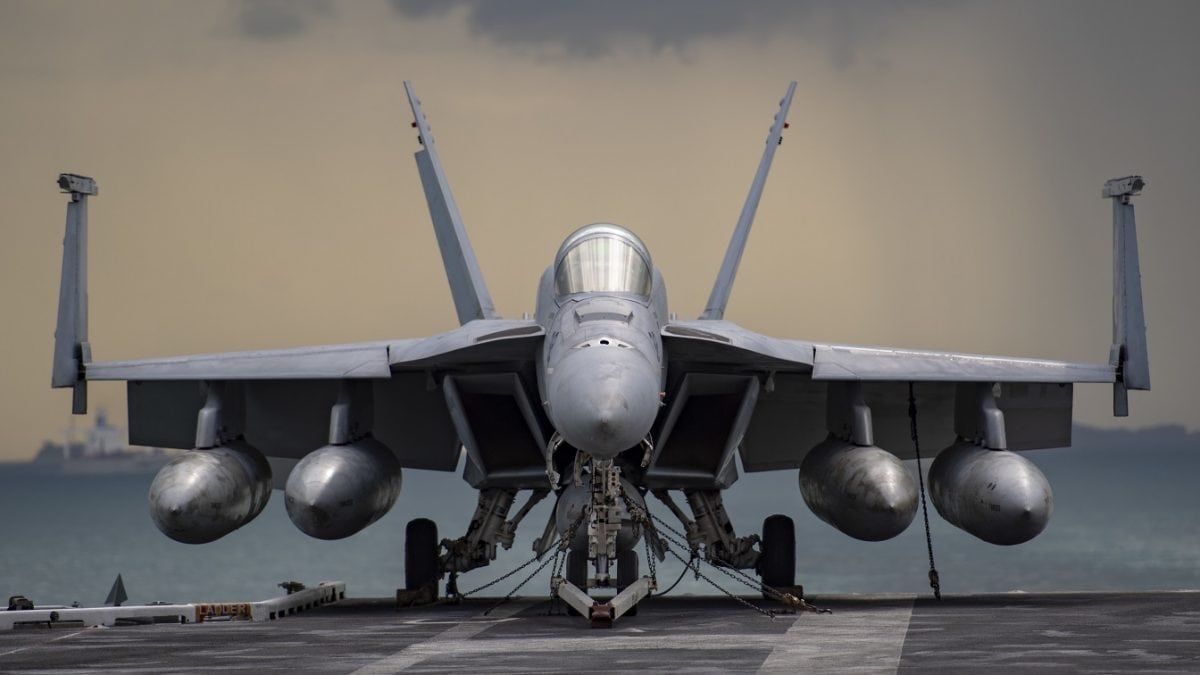
A (Feb. 5, 2021) An F/A-18E Super Hornet, from the “Kestrels” of Strike Fighter Squadron (VFA) 137, rests on the flight deck of the aircraft carrier USS Nimitz (CVN 68) during a strait transit. Nimitz is part of the Nimitz Carrier Strike Group and is deployed conducting maritime security operations and theater security cooperation efforts. (U.S. Navy photo by Mass Communication Specialist 3rd Class Elliot Schaudt/Released)
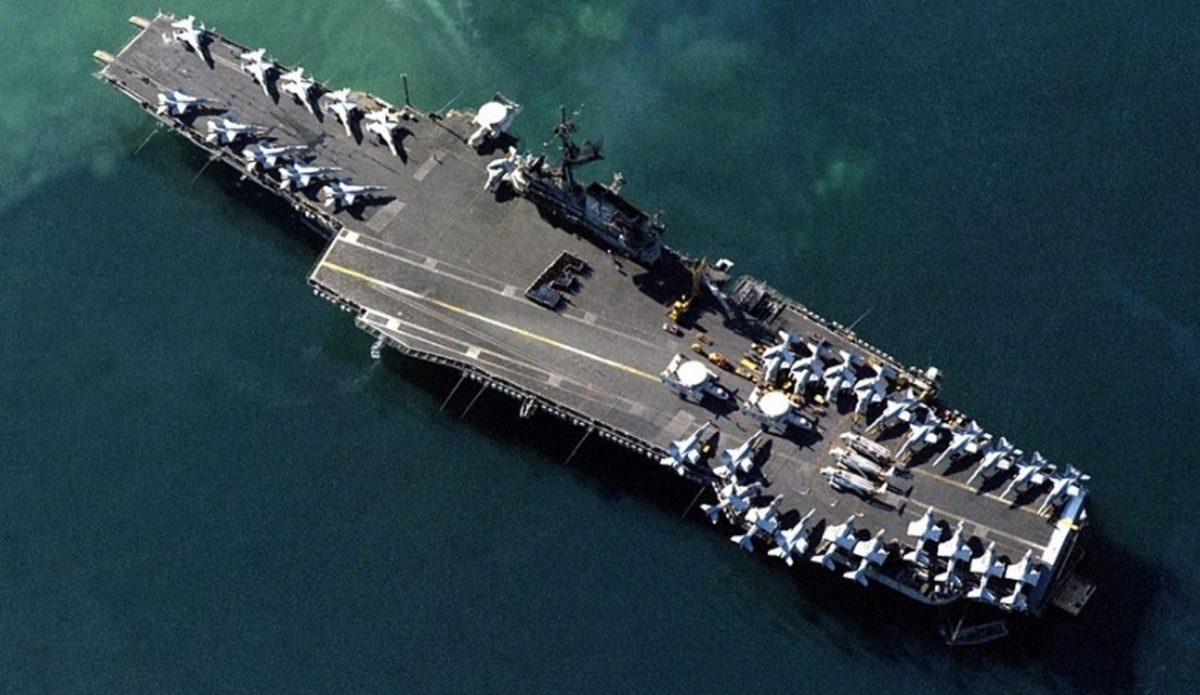
Image of Midway-class aircraft carrier. Image Credit: Creative Commons.
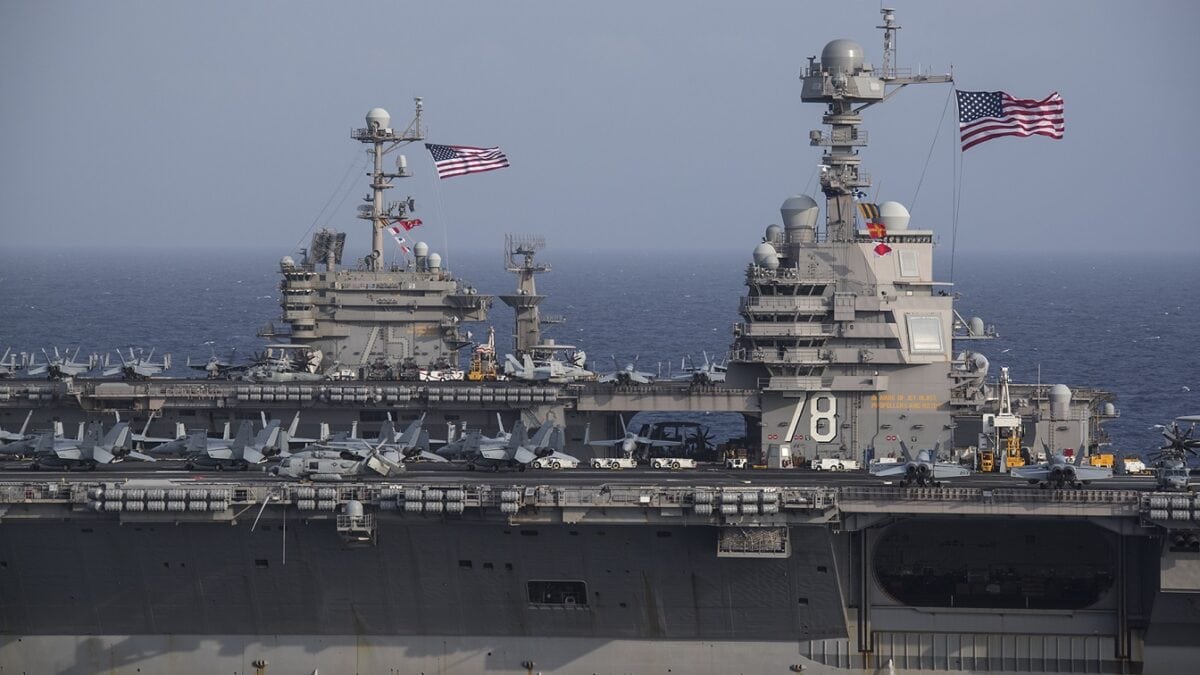
200604-N-QI093-1142
ATLANTIC OCEAN (June 4, 2020) The Ford-class aircraft carrier USS Gerald R. Ford (CVN 78) and the Nimitz-class aircraft carrier USS Harry S. Truman (CVN 75) transit the Atlantic Ocean, June 4, 2020, marking the first time a Ford-class and a Nimitz-class aircraft carrier have operated together underway. Gerald R. Ford is underway conducting integrated air wing operations and the Harry S. Truman Carrier Strike Group remains at sea in the Atlantic Ocean as a certified carrier strike group force ready for tasking in order to protect the crew from the risks posed by COVID-19, following their successful deployment to the U.S. 5th and 6th Fleet areas of operation. (U.S. Navy photo by Mass Communication Specialist 2nd Class Ruben Reed/Released
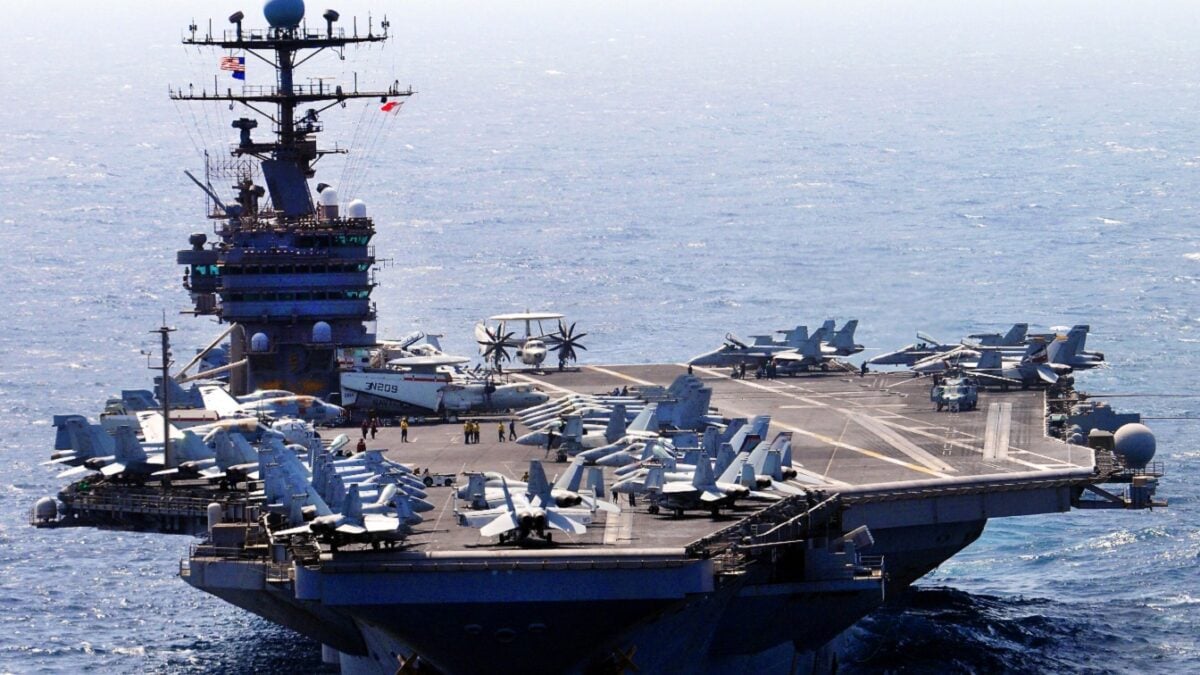
ARABIAN SEA (May 24, 2012) The Nimitz-class aircraft carrier USS Abraham Lincoln (CVN 72) transits the Arabian Sea. Abraham Lincoln is deployed to the U.S. 5th Fleet area of responsibility conducting maritime security operations, theater security cooperation efforts and support missions as part of Operation Enduring Freedom. (U.S. Navy photo by Mass Communication Specialist 3rd Class Amanda L. Kilpatrick/Released)
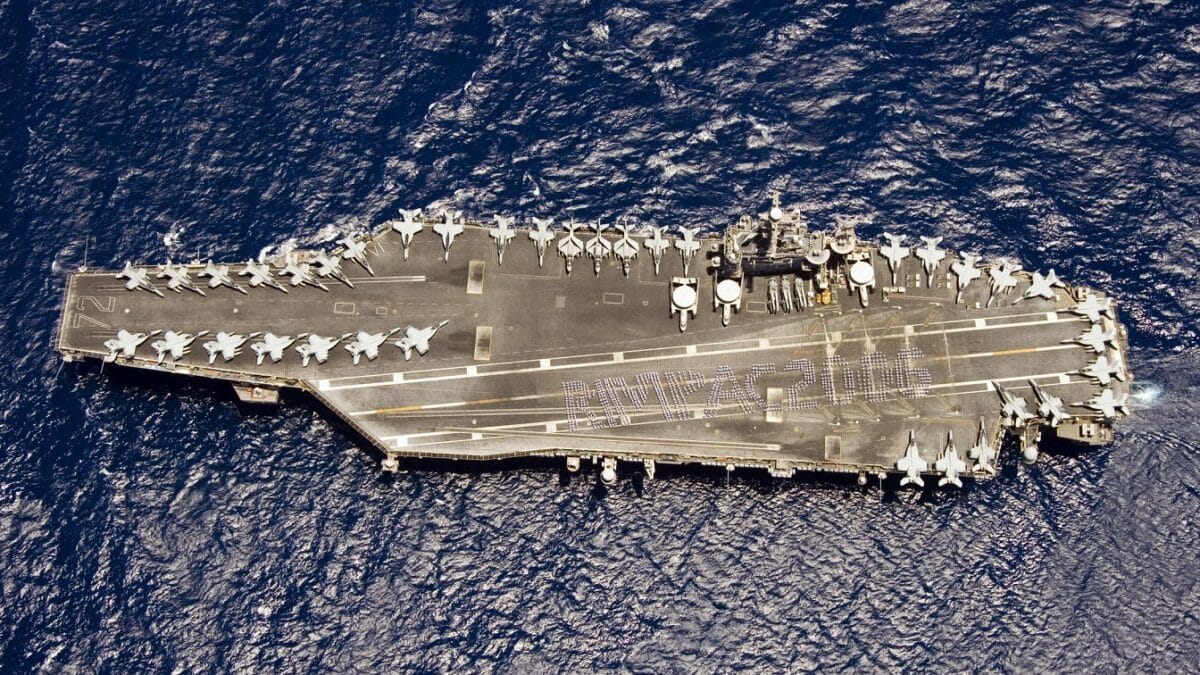
060725-N-7981E-170 (Jul. 25, 2006)
Aerial overhead view of US Navy (USN) Sailors aboard the USN Nimitz Class Aircraft Carrier USS ABRAHAM LINCOLN (CVN 72) spelling out RIMPAC 2006 on the flight deck of the ship during a photo exercise during Exercise Rim of the Pacific (RIMPAC) 2006 in the Pacific Ocean (POC). The exercise is designed to increase the tactical proficiency of participating units in a wide array of combined sea operations. RIMPAC 2006 brings together military forces from Australia (AUS), Canada (CAN), Chile (CHL), Peru (PER), Japan (JPN), the Republic of Korea (KOR), United Kingdom (UK) and the United States (US).
U.S. Navy photo by Mass Communication Specialist Seaman James R. Evans (RELEASED)
A Senior Editor for 1945, Peter Suciu is a Michigan-based writer who has contributed to more than four dozen magazines, newspapers and websites. He regularly writes about military hardware, firearms history, cybersecurity and international affairs. Peter is also a Contributing Writer for Forbes. You can follow him on Twitter: @PeterSuciu.

